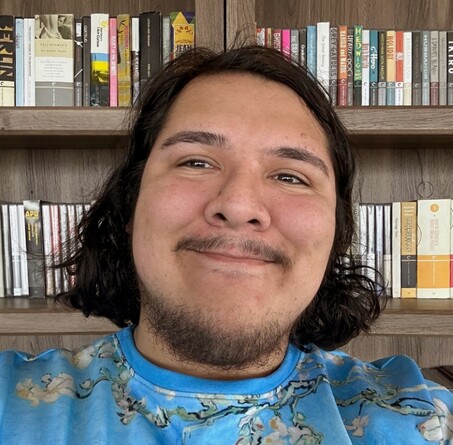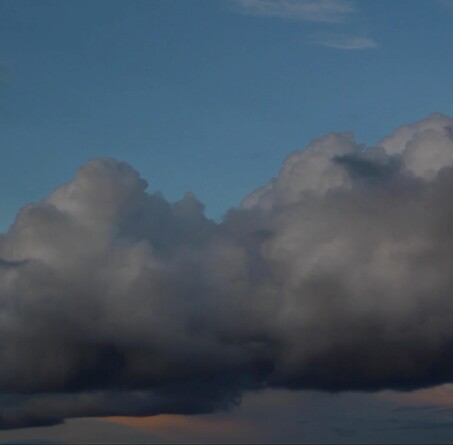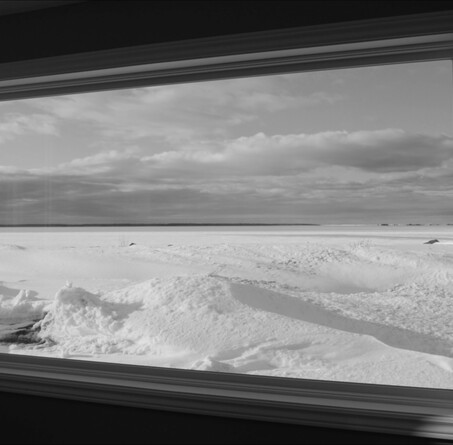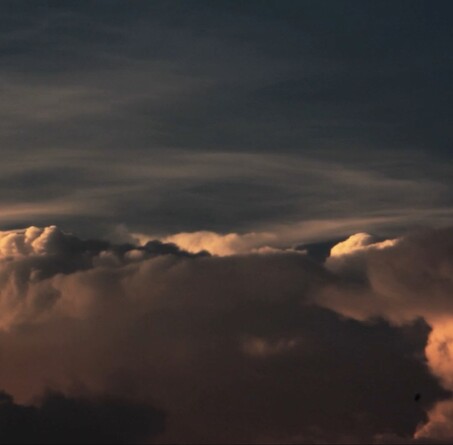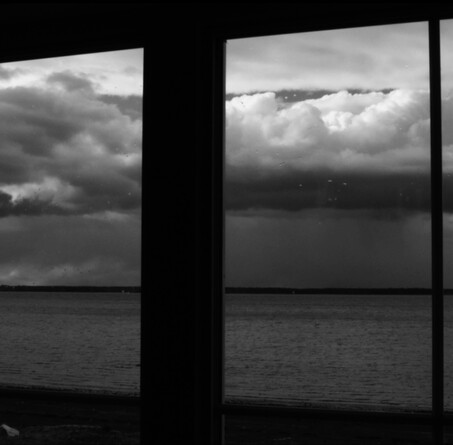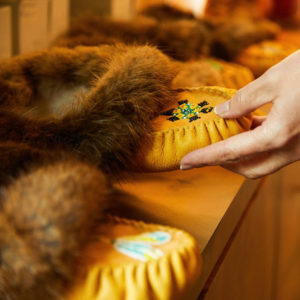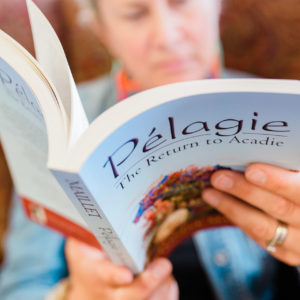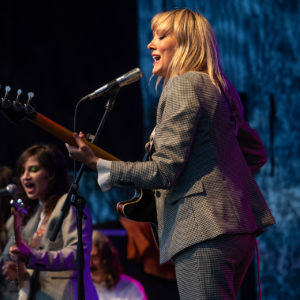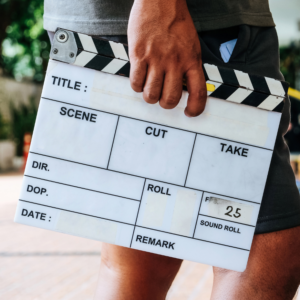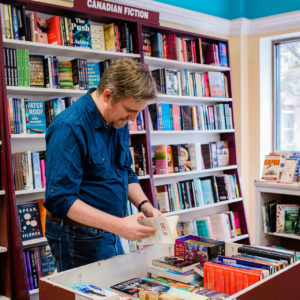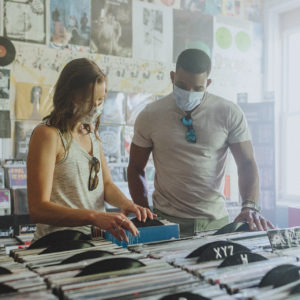
Kennlin Barlow
Kennlin Barlow is an award-winning Indigenous filmmaker from Lno Minigog (Indian Island), New Brunswick. Their work mainly consists of visual and slow cinematic short films and have been praised by artists such as Sook Yin Lee (Hedwig and the Angry Inch, Shortbus) and music video director Andy Hines (Lizzo’s Tempo, Alicia Keys’ So Done). Barlow has had their work showcased at the Cannes Film Festival in 2017 (Short Film Corner) and at the Toronto Queer Film Festival. Their work also traditionally visits the Halifax Independent Filmmakers Festival, which is a common and welcomed home for Barlow’s visual work that rarely uses the festival circuit, premiering mainly on Vimeo.
Kennlin’s work is a meditative experience, usually focusing on shapes and real time movements of an environment. Before and after COVID-19, Barlow would sometimes focus on the traditional lives of a city or individual, peaking into the life of someone and observing their dialogue. In some instances, Kennlin will speak behind the camera so that they can let their audience know that no matter what is documented or considered reality, you’re not viewing that person’s life, you’re viewing Kennlin’s perspective.
Kennlin is a member of the New Brunswick Filmmakers' Co-operative.
Who or what inspires you and why?
I think, without being cliché, who inspires me is my father. Ever since I was a kid, my dad would take me to the movies once a month or every second weekend and we’d watch an array of films. When I was 10 years old, we watched Clint Eastwood's Million Dollar Baby which was the first time I had a film hit me so hard emotionally. That experience helped me discover the power of filmmaking.
Me and my dad have been going to the movies together for almost 30 years now, and each year it’s always incredible for both of us to discover new gems. We now bring my nephews so we can also give them the gift of cinema that we’ve experienced growing up.
What drew you to filmmaking?
I might have accidently answered this one first, but another person who introduced me to films was my sister who had a massive movie collection that I would secretly watch when she had her friends over. After a while, she knew I would be watching them and just let me into the room.
Once she went to college when I was around 9 or 10 years old, I began stealing the movies she left behind such as A Very Long Engagement and Amelie. While they are not films for kids, the visuals were imbedded in my mind and gave me a very early head start in filmmaking.
Because we didn’t have a lot of money back then, we couldn’t afford a video camera, so I started doing stop motion clay animations on a very old webcam. It gave me preparations on framing, timing and editing. In 2007, my father gifted me my very first video camera which was a Sony Mini DV, and I brought it with me everywhere I went and had never let go of a camera since.
What do you enjoy most about filmmaking?
I think it’s the fact that you can capture your own reality. It’s not reality itself, even documentary, but it’s your own vision. You can manipulate anything you want, and the best part (also the worst part) is going into editing and seeing what footage worked and didn’t work. I never wrote scripts, so I always loved improvising. You always get the best surprises in the final product.
What do you enjoy most about being an artist living in New Brunswick?
I think it’s the uniqueness of this area. There’s so many environments and structures that haven’t been used yet in film and gives you free range to bring something new to an audience. The ocean is another part of New Brunswick that I enjoy. As a Pisces, growing up next to the water really unleashes my inner creative beast.
Describe what you are most proud of as an artist.
I think it’s possibly the film pieces that I’ve been creating the past few years. COVID-19, as heavy as it made the world, really puts things into perspective and gave me the tools and challenges in framing indoors. I loved filming outside but it gave my work a new stage and breathe of fresh visuals.
One of my proudest short films is Above a Grey/Green Sea which became one of my most successful and award-winning shorts. It’s a collection of rejected footage that I filmed between 2013-2015 of environments and my first relationship. It was a very surprising process because I had never dared to edit that footage until we were locked in the house. When I began searching through it, I finally found a rhythm that gave me the closure I needed.
The reception was shocking as well as I’m always so used to my work being embroiled in controversy. Once I started hearing positive feedback, it gave me such a huge rush and put me on a more focused path towards my feature debut.
What is your artistic approach and/or philosophy to creating art?
I think I do my best when I create something documentary-esque and giving my actors free range to do what they want as long as I have my framing right. I always aim to create a frame within a frame, like a window scene with an interior and exterior view where you have something going on in both the foreground and background. It’s very reminiscent to Abbas Kiarostami’s 24 Frames and Chantal Akerman’s Down There. Lately I’ve been adding fisheye to my work to disturb that process and give the work a shakeup. It’s something that destroys that OCD framing temporarily and that lack of control excites me.
Who is your favourite artist(s) and why?
Chantal Akerman, who I relate to very much as someone who battles mental illness. While Chantal lost her battle, she still left us an array of work and raw approach to her films. Down There, she discusses suicide in her family while being in Tel Aviv filming her neighbors through her transparent curtains. It gives you the whole picture of her depression and the isolation, but still yearning to be a part of the world.
What advice would you give to young, emerging artists?
Embrace rejection. I remember an Indigenous actress came to my school when I was a teen and while I was helping her bring stuff to her car, I asked, “What advice would you give me as an Indigenous person” and she said, “Get used to rejection”. It was a little depressing, but once I got into the industry, I understood what she meant.
I think with the type of work I make, slow cinema and art house cinema, I began to change that quote in my head and instead “Embrace” it. It helps with expectations because I’ve seen many young Indigenous artists who faced discouragement, not only by the industry, but by their own family.
I’ve seen so many people who would put down their own youth out of pure envy. It’s a form of lateral violence that will not help our own artists get far unless we approach this issue head on.
Where can people connect with you?
You can connect with me through Facebook (J Kennlin Barlow) or Instagram (@j.kennlinbarlow). You can also find my work at : https://vimeo.com/2007films.
